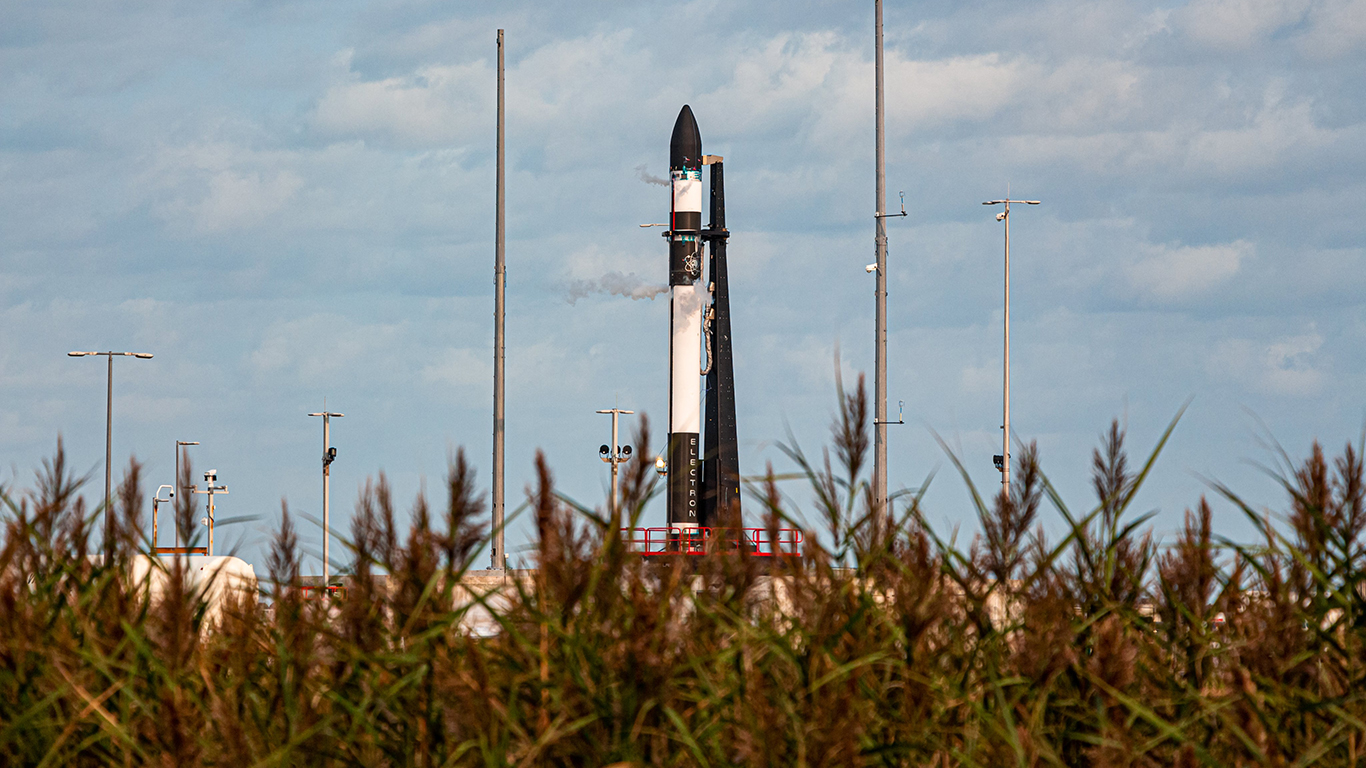
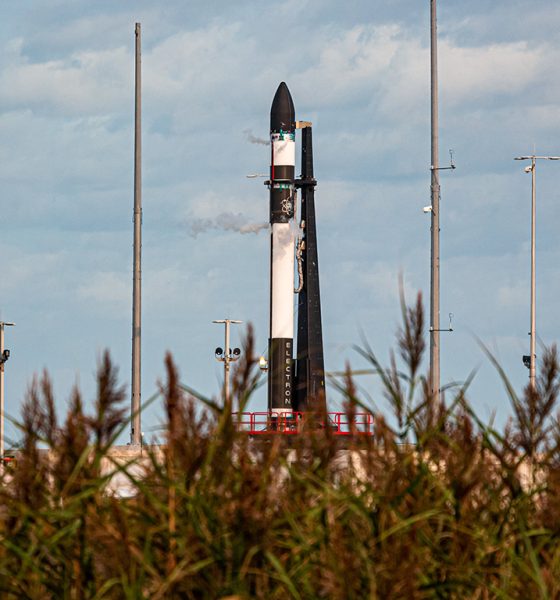
News
Rocket Lab secretly launches revolutionary satellite and readies for US launch debut
Rocket Lab’s recent flawless return to flight mission nicknamed “I Can’t Believe It’s Not Optical,” set the company up for loftier goals in the latter half of 2020 in a big way. Returning to operation after an in-flight anomaly and subsequent investigation is a massive accomplishment for any launcher. Returning to flight and debuting a pathfinder satellite developed and built in-house, however, solidified Rocket Lab as a full end-to-end space systems company.
For good measure, company founder and chief executive officer, Peter Beck, hopes to round out the year by activating two more Electron launchpads – one of which will be the launcher’s first US-based launch location dedicated to supporting missions for the United States government. Furthermore, following Electron’s seventeenth flight, Rocket Lab hopes to recover the expended first-stage booster – and perhaps more importantly, a mountain of data – as a stepping stone to launch vehicle reuse, a practice pioneered and solely dominated by SpaceX.
A return to flight and an introduction to space systems
Just eight weeks after Electron’s ill-fated thirteenth flight resulting in the loss of a second stage and all customer payloads due to an in-flight electrical anomaly, the next Electron was raised at Launch Complex 1 in Mahia, New Zealand. The fourteenth flight of Electron was a dedicated mission for San Francisco-based information services company, Capella Space. Initially announced, the mission deployed a single microsatellite called “Sequoia” to an approximate 500km circular orbit. Peter Beck later confirmed the mission also secretly featured the successful deployment of Rocket Lab’s first in-house designed and built satellite called “First Light.”
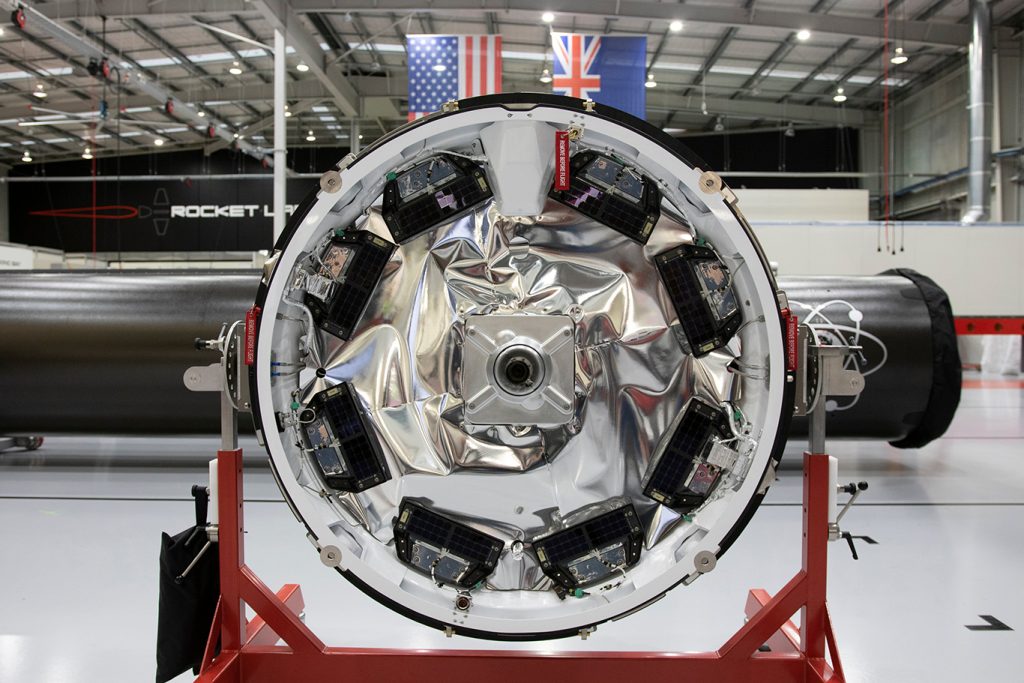
“First Light” is a pathfinder spacecraft based on Rocket Lab’s configurable Photon satellite platform. According to Rocket Lab, it exploits Electron’s Kick Stage, “a nimble but powerful extra stage on Electron designed to circularize payload orbits.” The Kick Stage is designed as a satellite bus with extended capabilities to transition into a satellite – Photon – and performing an independent standalone mission. This is exactly what occurred with “First Light.”
Following the deployment of the “Sequoia” microsatellite, Rocket Lab teams signaled the Kick Stage to enable the standalone Photon capabilities. The command transitioned the spacecraft from a delivery vehicle to a fully functional satellite for the very first time. “First Light” serves as the testbed of many upgraded components including improved management systems for power, thermal, and attitude control.
in a statement provided by Rocket Lab Beck said, “Launching the first Photon mission marks a major turning point for space users – it’s now easier to launch and operate a space mission than it has ever been. When our customers choose a launch-plus-spacecraft mission with Electron and Photon, they immediately eliminate the complexity, risk, and delays associated with having to build their own satellite hardware and procure a separate launch.”
Eventually, the extended Photon capabilities of the Kick Stage will be used to support lunar and interplanetary missions. Beck has gone on record many times stating that Rocket Lab is working toward funding a private mission to Venus with a more robust version of the Photon platform which will deploy a probe to collect information about the Venusian atmosphere.
Counting down to Electron’s first launch from Virginia
On September 17, just two weeks after introducing the world to “First Light,” Rocket Lab announced the final successful Electron wet dress rehearsal at its new Launch Complex 2 (LC-2) at the Mid-Atlantic Regional Spaceport in Wallops Island, Virginia.
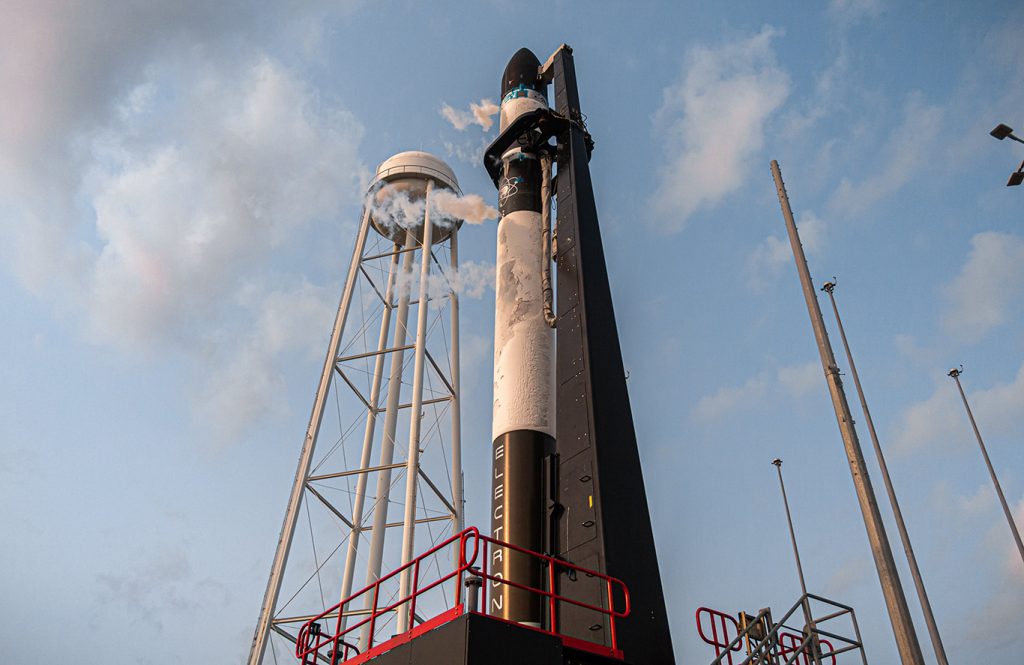
The wet dress rehearsal is a standard preparatory practice of raising the rocket vertical on the launchpad, fueling the rocket, and conducting a practice run of all countdown systems and procedures ahead of a launch attempt. This gives launch teams the opportunity to ensure that the rocket is prepared for flight and work out any kinks that may arise ahead of sending the vehicle to space. The countdown is carried down to T-0 and then the vehicle is emptied and safed.
Recently, Rocket Lab was granted a five-year Launch Operator License by the Federal Aviation Administration for the LC-2 site enabling the space systems company to support up to ten Electron missions a year from U.S. soil. The new operator license combined with the one previously procured for Launch Complex 1 in New Zealand allows Rocket Lab to support up to 130 flights of the Electron rocket globally per year.
It was speculated that Electron’s next flight – and the first launch from LC-2 in Virginia – would be the dedicated STP-27RM mission coordinated by the U.S. Space Force’s Space and Missile Systems Center. The first from Virginia will launch a single microsatellite for the Air Force Research Laboratory’s Monolith program. However, the first mission from Virginia is still waiting on a debut date to be identified.
In order for Electron to fly from Virginia, NASA must first certify Electron’s Autonomous Flight Termination System (AFTS) – a protective measure that will automatically destroy the rocket in a safe manner should anything anomalous occur during first stage flight. Electron’s AFTS has already previously flown numerous times from New Zealand. The first flight from Virginia, however, will be the first time a vehicle will launch from the Mid-Atlantic Regional Spaceport with an AFTS.
15 launches, 3 launch pads, and a booster recovery
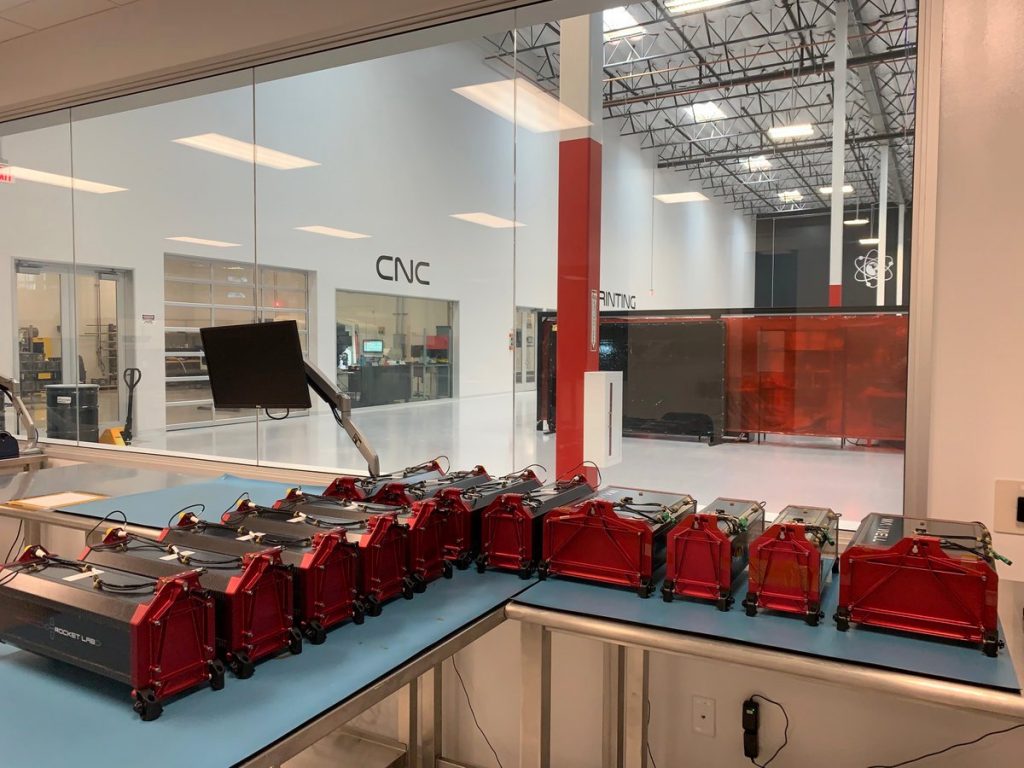
Until then, Rocket Lab is busy preparing for flight fifteen from New Zealand. The recently announced mission, nicknamed “In Focus,” is a rideshare mission featuring nine SuperDove satellites for Planet Labs and one payload for Spaceflight Inc. customer Canon Electronics Inc.
While preparing for the next flight, nearby Rocket Lab is simultaneously wrapping up construction on yet another launch pad. Launch Complex 1B is very much near completion and is expected to be brought online by year’s end. And that’s not the last goal Rocket Lab looks to achieve by the new year.
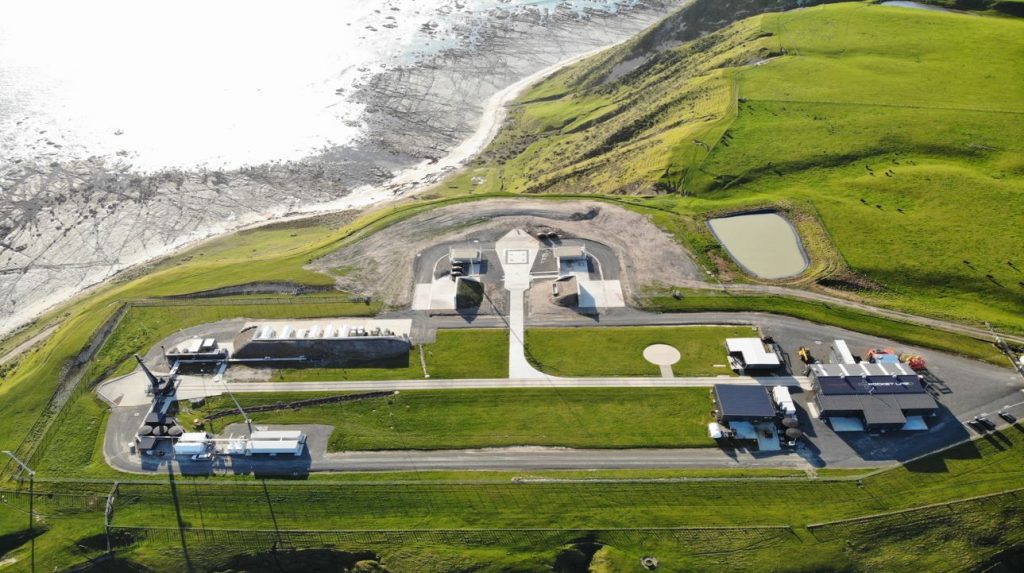
Beck has time and time again confirmed that the seventeenth flight of Electron will be the first attempt at recovering an expended first stage booster. Eventually, the company will attempt to catch the booster as it is falling back to Earth under the canopy of a parachute by utilizing a helicopter equipped with a specialized grappling hook. The first attempt at recovering a booster is not expected to be quite as elaborate.
Rocket Lab has strengthened the first-stage booster enough to survive the return trip. Until now, the booster has slammed into the ocean water and broken up into small bits. With the assistance of improved software and a deployable parachute, the booster of flight seventeen is expected to softly float back for a gentle water landing with the assistance of “recovery pontoons” as described in a Twitter post by Beck.
As of now, Rocket Lab has not identified any target dates for the upcoming milestones. The company has previously stated that the first mission from Virginia is expected to launch in the third quarter of 2020. Electron’s next flight – “In Focus” – from New Zealand is expected in the first half of October. Rocket Lab will provide future launch and development updates on their social media accounts.

Elon Musk
Tesla CEO Elon Musk teases insane capabilities of next major FSD update

Tesla CEO Elon Musk teased the insane capabilities of the next major Full Self-Driving update just hours after the company rolled out version 14.2 to owners.
Tesla Full Self-Driving v14.2 had some major improvements from the previous iteration of v14.1.x. We were on v14.1.7, the most advanced configuration of the v14.1 family, before Tesla transitioned us and others to v14.2.
However, Musk has said that the improvements coming in the next major update, which will be v14.3, will be where “the last big piece of the puzzle finally lands.”
14.3 is where the last big piece of the puzzle finally lands
— Elon Musk (@elonmusk) November 21, 2025
There were some major improvements with v14.2, most notably, Tesla seemed to narrow in on the triggers that caused issues with hesitation and brake stabbing in v14.1.x.
One of the most discussed issues with the past rollout was that of brake stabbing, where the vehicle would contemplate proceeding with a route as traffic was coming from other directions.
We experienced it most frequently at intersections, especially four-way stop signs.
Elon Musk hints at when Tesla can fix this FSD complaint with v14
In our review of it yesterday, it was evident that this issue had been resolved, at least to the extent that we had no issues with it in a 62-minute drive, which you can watch here.
Some owners also reported a more relaxed driver monitoring system, which is something Tesla said it was working on as it hopes to allow drivers to text during operation in the coming months. We did not test this, as laws in Pennsylvania prohibit the use of phones at any time due to the new Paul Miller’s Law, which took effect earlier this year.
However, the improvements indicate that Tesla is certainly headed toward a much more sentient FSD experience, so much so that Musk’s language seems to be more indicative of a more relaxed experience in terms of overall supervision from the driver, especially with v14.3.
Musk did not release or discuss a definitive timeline for the release of v14.3, especially as v14.2 just rolled out to Early Access Program (EAP) members yesterday. However, v14.1 rolled out to Tesla owners just a few weeks ago in late 2025. There is the potential that v14.3 could be part of the coming Holiday Update, or potentially in a release of its own before the New Year.
News
Tesla Full Self-Driving v14.2 – Full Review, the Good and the Bad

Tesla rolled out Full Self-Driving version 14.2 yesterday to members of the Early Access Program (EAP). Expectations were high, and Tesla surely delivered.
With the rollout of Tesla FSD v14.2, there were major benchmarks for improvement from the v14.1 suite, which spanned across seven improvements. Our final experience with v14.1 was with v14.1.7, and to be honest, things were good, but it felt like there were a handful of regressions from previous iterations.
While there were improvements in brake stabbing and hesitation, we did experience a few small interventions related to navigation and just overall performance. It was nothing major; there were no critical takeovers that required any major publicity, as they were more or less subjective things that I was not particularly comfortable with. Other drivers might have been more relaxed.
With v14.2 hitting our cars yesterday, there were a handful of things we truly noticed in terms of improvement, most notably the lack of brake stabbing and hesitation, a major complaint with v14.1.x.
However, in a 62-minute drive that was fully recorded, there were a lot of positives, and only one true complaint, which was something we haven’t had issues with in the past.
The Good
Lack of Brake Stabbing and Hesitation
Perhaps the most notable and publicized issue with v14.1.x was the presence of brake stabbing and hesitation. Arriving at intersections was particularly nerve-racking on the previous version simply because of this. At four-way stops, the car would not be assertive enough to take its turn, especially when other vehicles at the same intersection would inch forward or start to move.
This was a major problem.
However, there were no instances of this yesterday on our lengthy drive. It was much more assertive when arriving at these types of scenarios, but was also more patient when FSD knew it was not the car’s turn to proceed.
Can report on v14.2 today there were ZERO instances of break stabbing or hesitation at intersections today
It was a significant improvement from v14.1.x
— TESLARATI (@Teslarati) November 21, 2025
This improvement was the most noticeable throughout the drive, along with fixes in overall smoothness.
Speed Profiles Seem to Be More Reasonable
There were a handful of FSD v14 users who felt as if the loss of a Max Speed setting was a negative. However, these complaints will, in our opinion, begin to subside, especially as things have seemed to be refined quite nicely with v14.2.
Freeway driving is where this is especially noticeable. If it’s traveling too slow, just switch to a faster profile. If it’s too fast, switch to a slower profile. However, the speeds seem to be much more defined with each Speed Profile, which is something that I really find to be a huge advantage. Previously, you could tell the difference in speeds, but not in driving styles. At times, Standard felt a lot like Hurry. Now, you can clearly tell the difference between the two.
It seems as if Tesla made a goal that drivers should be able to tell which Speed Profile is active if it was not shown on the screen. With v14.1.x, this was not necessarily something that could be done. With v14.2, if someone tested me on which Speed Profile was being used, I’m fairly certain I could pick each one.
Better Overall Operation
I felt, at times, especially with v14.1.7, there were some jerky movements. Nothing that was super alarming, but there were times when things just felt a little more finicky than others.
v14.2 feels much smoother overall, with really great decision-making, lane changes that feel second nature, and a great speed of travel. It was a very comfortable ride.
The Bad
Parking
It feels as if there was a slight regression in parking quality, as both times v14.2 pulled into parking spots, I would have felt compelled to adjust manually if I were staying at my destinations. For the sake of testing, at my first destination, I arrived, allowed the car to park, and then left. At the tail-end of testing, I walked inside the store that FSD v14.2 drove me to, so I had to adjust the parking manually.
This was pretty disappointing. Apart from parking at Superchargers, which is always flawless, parking performance is something that needs some attention. The release notes for v14.2. state that parking spot selection and parking quality will improve with future versions.
Any issues with parking on your end? 14.1.7 didn’t have this trouble with parking pic.twitter.com/JPLRO2obUj
— TESLARATI (@Teslarati) November 21, 2025
However, this was truly my only complaint about v14.2.
You can check out our full 62-minute ride-along below:
Elon Musk
SpaceX issues statement on Starship V3 Booster 18 anomaly
The incident unfolded during gas-system pressure testing at the company’s Massey facility in Starbase, Texas.

SpaceX has issued an initial statement about Starship Booster 18’s anomaly early Friday. The incident unfolded during gas-system pressure testing at the company’s Massey facility in Starbase, Texas.
SpaceX’s initial comment
As per SpaceX in a post on its official account on social media platform X, Booster 18 was undergoing gas system pressure tests when the anomaly happened. Despite the nature of the incident, the company emphasized that no propellant was loaded, no engines were installed, and personnel were kept at a safe distance from the booster, resulting in zero injuries.
“Booster 18 suffered an anomaly during gas system pressure testing that we were conducting in advance of structural proof testing. No propellant was on the vehicle, and engines were not yet installed. The teams need time to investigate before we are confident of the cause. No one was injured as we maintain a safe distance for personnel during this type of testing. The site remains clear and we are working plans to safely reenter the site,” SpaceX wrote in its post on X.
Incident and aftermath
Livestream footage from LabPadre showed Booster 18’s lower half crumpling around the liquid oxygen tank area at approximately 4:04 a.m. CT. Subsequent images posted by on-site observers revealed extensive deformation across the booster’s lower structure. Needless to say, spaceflight observers have noted that Booster 18 would likely be a complete loss due to its anomaly.
Booster 18 had rolled out only a day earlier and was one of the first vehicles in the Starship V3 program. The V3 series incorporates structural reinforcements and reliability upgrades intended to prepare Starship for rapid-reuse testing and eventual tower-catch operations. Elon Musk has been optimistic about Starship V3, previously noting on X that the spacecraft might be able to complete initial missions to Mars.








